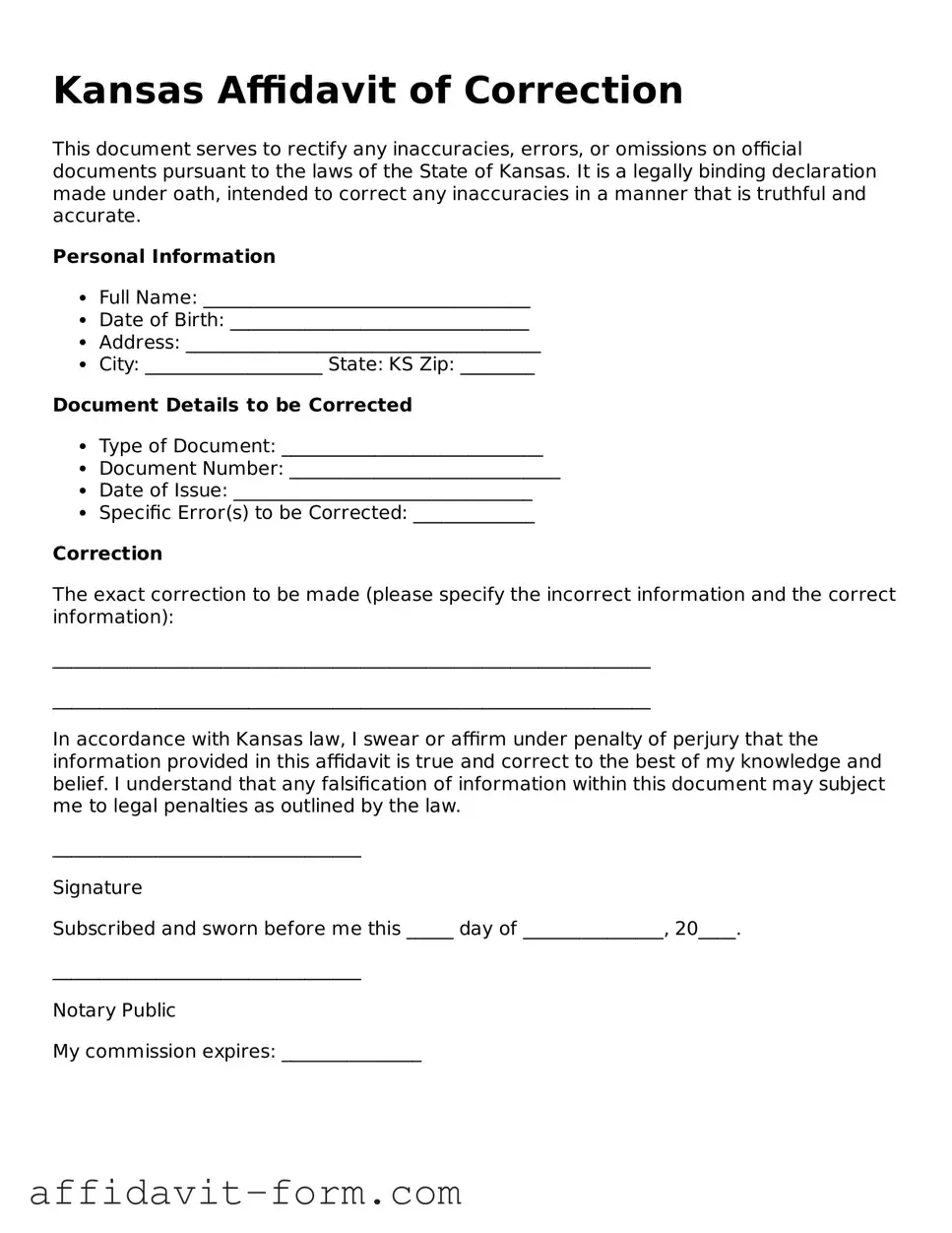Kansas Affidavit of Correction
This document serves to rectify any inaccuracies, errors, or omissions on official documents pursuant to the laws of the State of Kansas. It is a legally binding declaration made under oath, intended to correct any inaccuracies in a manner that is truthful and accurate.
Personal Information
- Full Name: ___________________________________
- Date of Birth: ________________________________
- Address: ______________________________________
- City: ___________________ State: KS Zip: ________
Document Details to be Corrected
- Type of Document: ____________________________
- Document Number: _____________________________
- Date of Issue: ________________________________
- Specific Error(s) to be Corrected: _____________
Correction
The exact correction to be made (please specify the incorrect information and the correct information):
________________________________________________________________
________________________________________________________________
In accordance with Kansas law, I swear or affirm under penalty of perjury that the information provided in this affidavit is true and correct to the best of my knowledge and belief. I understand that any falsification of information within this document may subject me to legal penalties as outlined by the law.
_________________________________
Signature
Subscribed and sworn before me this _____ day of _______________, 20____.
_________________________________
Notary Public
My commission expires: _______________
